Download:
docx |
pdf
MEMORANDUM OMB
# 1850-0582 v. 28
DATE: July
15, 2021
TO: Robert
Sivinski
Office
of Information and Regulatory Affairs, Office of Management and
Budget
FROM: Tara
Lawley
Chief,
Postsecondary Branch, Administrative Data Division, National Center
for Education Statistics
THROUGH: Carrie
Clarady, OMB Liaison, NCES
SUBJECT: Integrated
Postsecondary Education Data System (IPEDS) 2020-21 through 2021-22
FAQ, Instruction, and Communications Package Summer 2021 Change
Request (OMB# 1850-0582 v.28)
The
Integrated Postsecondary Education Data System (IPEDS) is a web-based
data collection system designed to collect basic data from all
postsecondary institutions in the United States and the other
jurisdictions. IPEDS enables the National Center for Education
Statistics (NCES) to report on key dimensions of postsecondary
education such as student enrollment, degrees and other awards
earned, tuition and fees, average net price, student financial aid,
graduation rates, revenues and expenditures, faculty salaries, staff
employed, and information on academic libraries. The IPEDS web-based
data collection system was implemented in 2000-01 and collects basic
data from approximately 6,600 postsecondary institutions in the
United States and the other jurisdictions that are eligible to
participate in Title IV Federal financial aid programs. All Title IV
institutions are required to respond to IPEDS (Section 490 of the
Higher Education Amendments of 1992 (HEA, P.L. 102-325)). IPEDS
allows other (non-title IV) institutions to participate on a
voluntary basis. Approximately 200 institutions elect to respond.
IPEDS data are available to the public through the IPEDS website.
IPEDS
2019-20 through 2021-22 annual data collection was approved by the
Office of Management and Budget (OMB) in July 2019 (OMB# 1850-0582
v.24), with subsequent revisions approved in December 2019, April
2020, and July 2020 (OMB# 1850-0582 v.25-27).
This
request is to make changes in IPEDS data collection materials so as
to clarify online instructions; to update frequently asked questions
and glossary terms; and to provide updated communications for the
2021-22 collection, indicating that there are no significant changes
to the 2021-22 collection and removing coronavirus pandemic specific
communications. This request does not introduce any changes to
respondent burden or the cost to the federal government.
NCES
regularly receives feedback from the IPEDS reporting community on
areas that require clarification. Clarification changes will be made
to the following IPEDS collections: Completions, 12-month Enrollment,
Academic Libraries, Admissions, Outcome Measures, Fall Enrollment,
Finance, Human Resources, and Student Financial Aid. Most
clarifications provide greater detail to help institutions better
understand what needs to be reported. Some changes relate to the
clarifying of terminology around summer terms and provide more
consistency across survey components. Another notable change is the
removal of subcategories on the distance education question in
Completions, which was not providing the expected utility. The other
three collections (Graduation Rates, 200% Graduation Rates, and
Institutional Characteristics) are unchanged with the exception of
the update of dates throughout the documents.
The
changes made to the IPEDS collection documents are listed in the
table on the following pages. Changes to the communication materials
are detailed in Attachment 1, beginning on p. 11 of this memo, and
changes to the New Keyholder Handbook are detailed in Attachment 2,
beginning on p. 18 of this memo.
Survey
component/Other
|
Changed
instruction/FAQ/screen (where applicable; additions in red,
deletions with strikethrough,
rewording in blue)
|
Change
type (e.g., addition/
deletion/ rewording)
|
Completions
(C)
|
Remove
checkboxes from the Distance Education question (CIP Data screen)
(p. 3):
Old
screen:

New
screen:

|
Deletion
on screen - subcategories removed as the detail provided was not
useful
|
C
|
Remove
checkbox language from Distance Education instructions under I.
CIP Data Screens (p.12):
Distance
Education
For
each 6-digit CIP code and program level/length combination at your
institution, please select one of the following three options (it
is possible that one or more programs may be reported under the
same CIP):
All
programs in the CIP can be completed entirely online.
At
least one program in the CIP can be completed entirely online.
(please
also indicate whether any of the online programs within the CIP
has an onsite requirement).
None
of the programs in this CIP can be completed entirely online.
|
Deletion
in instructions to match removal of checkboxes on screen
|
C
|
Add
a note below the Distance Education instructions under I. CIP Data
Screens (mirroring EF instructions) (p. 13):
NOTE:
Requirements for coming to campus for orientation, testing, or
academic support services do not exclude a program from being
classified as exclusively distance education. Similarly, if
instructional portions of the program are entirely online, but
there is a requirement to complete a practicum, residency, or
internship, the program is still considered entirely distance
education.
|
Addition
in instructions for clarity
|
C
|
Add
the following FAQ to General FAQ section in C (p. 17 & p. 20):
Should
I include credentials earned by dual enrolled high school
students?
Yes,
recognized postsecondary credentials earned by dual enrolled
students prior to graduating high school should be included.
|
Addition
to FAQ for clarity
|
C
|
Edited
the following FAQ in General FAQ section in C (p. 17 & p. 20):
My
institution has students for which gender is
unknown
does
not align with the ‘Men’ and ‘Women’
categories in IPEDS (e.g., non-binary, unknown). Since
there is no place to report other
“gender
unknown”
categories
on
the IPEDS data collection screens, how should we report these
individuals?
These
individuals are still to be reported to IPEDS.,
even though their gender is unknown.
It is up to the institution to decide how best to handle
reporting individuals whose gender
is
unknown
does
not align with the ‘Men’ and ‘Women’
categories. However,
a common method used is to allocate these students based on the
known proportion of men to women.
|
Reworded
FAQ to better align with current language around gender
|
12
Month Enrollment (E12)
|
Edited
the following FAQ in General FAQ section in E12 (p. 45):
What
is the difference between 12-month enrollment and Fall enrollment?
The
12-month
Enrollment is
a
(E12)
survey component collects an institution’s cumulative
unduplicated headcount of
enrollment over
the full
for the entire 12-month
period beginning July 1 and ending June 30. In contrast, the
Fall
Enrollment
is
a
(EF) survey component collects an institution’s “snapshot”
enrollment count of
students enrolled on a particular date
in the fall. For academic reporters, EF enrollment counts reflect
the institution’s official fall reporting date or October
15. For program reporters, EF enrollment counts reflect students
enrolled during the period August 1 to October 31. The EF
enrollment counts, for both academic reporters and program
reporters, should be viewed as a subset of the larger E12 counts.
The E12 survey component captures all unduplicated student
enrollments, including fall-enrolled students (i.e., reported on
the EF survey component) plus all other unduplicated student
enrollments not captured on the EF survey component but that
enrolled during the July 1 to June 30 time period.
|
Rewording
and
addition
to FAQ to provide more detail
|
E12
|
Edited
the following bullet point in the Instructions in E12 (p. 15):
Bullet
#3 Under: “Full-time,
non-degree/non-certificate-seeking full-time undergraduate
students”
If
a student's attendance level (undergraduate or graduate) changes
during the 12-month period, count the student
at his/her highest level enrolled
student’s attendance level as of entry to the institution
for the first full term (i.e., typically the fall or spring terms
for academic reporters).
For
example: If a student is an undergraduate in the fall and a
graduate student in the spring, count the student as an
undergraduate
student.
|
Rewording
in instructions to provide more clarity
|
E12
|
Edited
the following FAQ in General FAQ section in E12 (p. 24):
For
students who start in the summer, the
summer term is typically not considered a full term. and
if summer is NOT a “full” term,
pPlease
use the following guidance:
If
a student starts in the summer of 2020
(prior
to July 1),
and they do NOT enroll in any additional terms in 2020-21, they
are not to
be included
in the July 1, 2020 – June 30, 2021 E12 counts (as they
would have been included in the prior E12 counts).
If
a student starts in the summer of 2020 (after
July 1),
and
they do NOT enroll in any additional terms in 2020-21, they are
still included in the 2020-21 E12 counts, at the attendance
status (i.e., full-time or part-time) in which they were enrolled
during the summer. [Moved this bullet #3 into the #2 position]
If
a student starts in the summer of 2020 (prior
to July 1 OR after July 1),
the summer term is not a “full term,” and
the student continues enrollment beyond summer, either
into the fall term or re-enrolls in the spring term, the
institution should use the next
“full”
full term
(e.g., Ffall
or
spring)
to determine if the student is full-time or part-time, and the
student should be included in the 2020-21 E12 counts. [Moved this
bullet #2 into the #3 position]
|
Rewording/reorganization
of FAQ answer to provide more detail
|
E12
|
Edited
the following FAQ in General FAQ section in E12 (p. 24):
FAQ
# 6 How do I report students who enter my institution as
non-degree/non-certificate-seeking students in the fall, but in
the following spring term enroll as degree/certificate-seeking
students?
Count
these students as continuing degree/certificate-seeking because
these students became degree/certificate-seeking at some point
during the E12
period
(July 1 – June 30) and had “prior postsecondary
experience.”
Count
these students as first-time degree/certificate-seeking if they
were enrolled for credit at your institution in the fall prior to
receipt of a high school
diploma
(dual enrolled students).
NEW
FAQ #9: How do I report students who changed attendance status
(part-time to full-time or full-time to part-time) during the July
1-June 30 reporting period?
Report
students based on their attendance status in their first full term
enrolled (i.e., typically the fall or spring terms for academic
reporter), even if that status changed during the 12-month period.
|
Replace
FAQ # 6 with new FAQ that provides more relevant information.
|
E12
|
Edited
the following FAQ in Glossary section in E12 (p. 66):
Summer
Term
Session: A
summer term
session
is typically not considered a full term
shorter than a regular session and is not considered part of
the academic year.
It is not the third term of an institution operating on a
trimester system or the fourth term of an institution operating on
a quarter calendar system. The institution may have two or more
sessions occurring in the summer term
months.
Some schools, such as vocational and beauty schools, have
year-round classes with no separate summer term
session.
|
Rewording
to provide more consistent language
|
E12
|
Edited
the following FAQ in Unduplicated Count FAQ section in E12 (p.
25):
FAQ#2:
How do I report a student who changes enrollment levels during the
12-month period? (4-year institutions only)
The
enrollment level should be determined at the first “full”
term during
the 12-month reporting period at
entry.
For example, a student enrolled as an undergraduate in the fall
and then as a graduate student in the spring should be reported as
an undergraduate student on the 12-month Enrollment survey
component.
|
Rewording
to clarify
|
E12/Outcome
Measures (OM)
|
Edited
the following FAQ in Unduplicated Count FAQ section in E12 (pp.
44-46, 67-69, and 89-91):
FAQ:
How can I ensure consistent reporting of
degree/certificate-seeking undergraduates across EF, E12, and OM
survey components?
The
Fall Enrollment (EF) survey component is a “snapshot”
of the institution’s enrollment in the fall. The 12-month
Enrollment (E12) survey component captures the institution’s
total unduplicated headcount enrollment for an entire 12-month
period (July 1 to June 30).
EF
enrollment counts are a subset of the E12 enrollment counts, as
the E12 survey component captures students enrolled in the fall
plus any other unduplicated students not captured in the EF
survey component (e.g., students who first enroll in the spring
term or enroll only in the summer term).
Because
the EF survey component is a subset of the E12 survey component,
all student enrollment counts (total and by disaggregate)
reported in the current year’s E12 survey component should
be greater than or equal to the prior year’s EF survey
component. Note that the prior year’s EF survey component
matches the “data year” of the current year’s
E12 survey because there is a greater “time lag” in
reporting E12 data.
Because
the fall term is considered a full term for IPEDS reporting
purposes, students enrolled in the fall term and captured in the
EF survey component should retain their same enrollment statuses
(e.g., part-time or full-time, first-time or non-first-time,
degree/certificate-seeking or non-degree/non-certificate seeking,
undergraduate or graduate) in the E12 survey component.
For
example, a full-time, first-time student reported on the EF
survey would also be reported as a full-time, first-time student
in the E12 survey. Similarly, a part-time,
non-degree/non-certificate-seeking student reported in the EF
survey component would retain those statuses in the E12 survey
component.
For
both program reporters and academic reporters, student
enrollment statuses as reported on the current-year EF survey
should be retained for E12 reporting in the following data
collection year when the data coverage periods align (i.e., you
should not change students’ statuses between EF and E12
reporting).
For
students not reported on the EF survey component (i.e., not
enrolled in the fall and therefore not captured), default to the
student’s first full term at entry to determine enrollment
statuses (typically spring in this scenario). If the student
enrolls only in the summer and at no other time during the
12-month reporting period, then the summer term may be used to
determine student statuses.
While
the E12 survey component captures unduplicated enrollment counts
during the 12-month period of July 1 to June 30, the Outcome
Measures (OM) survey component captures the 4-, 6-, and 8-year
academic outcomes for the cohort of degree/certificate-seeking
students during the same 12-month period. Like the E12 survey
component, students’ statuses (i.e.,
first-time/non-first-time, Pell/Non-Pell, full-time/part-time)
are determined by students’ first full term (i.e., fall or
spring).
|
Addition
to help institutions better understand connections between surveys
|
E12/OM
(continued from previous page)
|
Unlike
the E12 survey component, the OM survey component captures only
degree/certificate-seeking students. For this reason, students’
statuses for OM reporting purposes are determined in their first
full term as a degree/certificate-seeking student.
For example, students enter as non-degree/non-certificate-seeking
students in the fall and in the following spring term enroll as
degree/certificate-seeking students, these students would be
reported as:
In
EF as non-degree/non-certificate-seeking students with the
statuses (e.g., full-time/part-time) determined at their first
full term (i.e., fall term).
In
E12 as non-degree/non-certificate-seeking students with the
statuses (e.g., full-time/part-time) determined at their first
full term (i.e., fall term). Note that students reported on both
the EF and E12 survey components should be reported with the
same enrollment statuses (i.e., they do not change).
In
OM as degree/certificate-seeking students with the statuses
(i.e., first-time/non-first-time, Pell/non-Pell,
full-time/part-time) determined at their first full term as
degree/certificate-seeking students (i.e., spring term). Because
the OM survey component is designed to capture academic outcomes
for degree/certificate-seeking students, students who are
non-degree/non-certificate-seeking in the fall (and reported as
such for both EF and 12 survey components) but then become
degree/certificate-seeking after the fall term should be
reported for OM reporting purposes. Only in this scenario and
only for OM reporting purposes should fall-enrolled students’
enrollment statuses then be determined from a non-fall term to
align with when they became degree/certificate-seeking.
Therefore,
OM counts should be same or slightly greater than
degree/certificate-seeking student counts reported in E12 because
there is the potential for some students to enroll as
non-degree/non-certificate-seeking in the fall term (and reported
as such for EF and E12 survey components) but then change their
enrollment to degree/certificate-seeking in the spring term (and
thus need to be captured in the OM survey component).
|
Addition
(continued from previous page)
|
E12
|
FAQ
17) How do I report students who enter my institution as
non-degree/non-certificate-seeking students in the fall, but in
the following spring term enroll as degree/certificate-seeking
students?
Count
these students as continuing degree/certificate-seeking because
these students became degree/certificate-seeking at some point
during the E12 period (July 1 – June 30) and had “prior
postsecondary experience.”
Count
these students as first-time degree/certificate-seeking if they
were enrolled for credit at your institution in the fall prior to
receipt of a high school diploma (dual enrolled students).
|
Deletion;
there is a new FAQ that better explains this as well as a dual
enrolled FAQ. FAQs are renumbered as well.
|
E12
|
Edited
the following FAQ in Unduplicated Count FAQ section in E12 (pp.
22-25, 44-46, 67-69, and 88-90):
FAQ
4) My
institution has students for which gender
is
unknown does
not align with the ‘Men’ and ‘Women’
categories in IPEDS (e.g., non-binary, unknown).
Since
there is no place to report other “gender
unknown” categories on
the IPEDS data collection screens, how should we report these
individuals?
These
individuals are still to be reported to IPEDS,
even though their gender is unknown.
It
is up to the institution to decide how best to handle reporting
individuals whose gender
is
unknown does
not align with the ‘Men’ and ‘Women’
categories.
However,
a common method used is to allocate these students
with
gender unknown based
on the known proportion of men to women.
|
Rewording
|
E12
|
Edited
the following survey structure in E12 (pp. 4-6, 31-33):
Old
Survey Screen:
Revised survey screen:


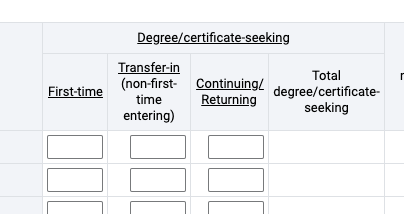
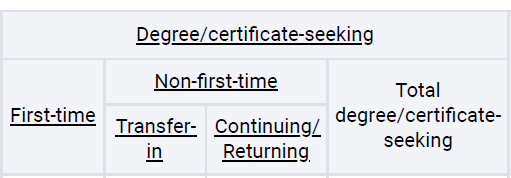
|
Reorganizing
– Non-first-time label applies to both transfer-in and
continuing/returning students, so label moved above for clarity
|
Student
Financial Aid (SFA)
|
New
FAQ 6 (and renumbering FAQs #6-13 as #7-14) (p. 2, 20, 32, 36, 40,
42, 54, 66, 70, 74, 77, 93, 105, 109, 113, 116, 124, 137, 141,
145, 147, 151, 155, and 159)
When
do I report financial aid awards for students who attend in the
summer?
Report
financial aid awarded for the [AY] academic year. If a student
receives an award for a cross-over payment period, report the
award in the academic year assigned by the financial aid office,
which should be the same as the financial aid allocation or
authorization year. This also applies if a student receives two
Federal Pell Grant awards in the same academic year (i.e.,
Year-Round Pell).
|
Additional
FAQ to explain reporting of students who attend in the summer
|
Outcome
Measures (OM)
|
Replaced
all references to “summer session”
and “summer months”
with “summer term”
for consistency across survey components and global glossary.
|
Rewording
|
OM
|
Edited
the following FAQ in FAQ section in Outcome Measures (p. 17)
FAQ
9) If we are reporting on a full-year cohort that enters between
July 1 and June 30 (OM coverage cohort year), what happens if a
student switches their attendance levels (e.g., full-time or
part-time) during the OM coverage cohort year?
The
attendance level is determined upon
on the first full term at entry entering
the institution.
The student remains in the cohort even if there is a change in
attendance levels in subsequent terms or years.
|
Rewording
|
OM
|
Edited
the following FAQ in FAQ section in Outcome Measures (pp. 15 &
17)
FAQ
10)
I
have a group of degree-seeking undergraduate students who took a
summer term
session
in
2013. However, the start date of the summer term
session
was
prior to Outcome Measures coverage cohort year start date of
July 1. In which cohort year should these students be reported?
For
the 2013-14 cohort(s), institutions should include students who
entered between July 1, 2013 - June 30, 2014.
For
students who start in the summer, the
summer term is typically not considered a full term. and
if summer is NOT a "full" term, they should be treated
based on guidance in the FAQs.
Please use the following guidance: OM
cohorts should be accurate based on a student's "normal"
attendance intensity and not based on a partial summer term, which
is not a full term.
If
a student starts in the summer of 2013 (prior to July 1), and
they do NOT enroll in any additional terms in 2013-14, they are
not to
be
included in the July 1, 2013 - June 30, 2014 cohort because they
would have been included in the prior OM cohort year.
If
a student starts in the summer of 2013 (after July 1), and
they do NOT enroll in any additional terms in 2013-14, they are
still included in the 2013-14 cohort, at the enrollment level
(full-time or part-time) in which they were enrolled during the
summer. [Moved
this bullet #3 into the #2 position]
If
a student starts in the summer of 2013 (prior to July 1
or
OR
after
July 1),
the summer term is not a "full term,"
and the student continues enrollment beyond summer, either
into the fall term or re-enrolls in the spring term, the
institution should use the next
"full"
full
term
(e.g., Ffall
or
spring)
to determine if the student is full-time or part-time, and the
student should be included in the 2013-14 cohort. [Moved
this bullet #2 into the #3 position]
Please
note: OM cohorts should be accurate based on a student's "normal"
attendance intensity
level (e.g., full-time or part-time) based on the first full term
and not based on a partial
summer term, which is not a full term.
|
Rewording
and reorganizing for clarity
|
OM
|
FAQ
15) (Degree-seeking
and Non-degree-seeking Students)
If
I am an academic year reporter, how do I report students who enter
my institution as non-degree/certificate-seeking students in the
fall, but in the following spring term enroll as
degree/certificate-seeking students?
Include
these students in your OM cohort because these students became
degree/certificate-seeking at some point during the full-year
cohort of July 1, 2012 - June 30, 2013.
|
Deleted
FAQ
|
Admissions
(ADM)
|
Edited
the following Data Reporting Reminder (p. 2)
Under
“Data Reporting Reminders”:
ADM
is only applicable to first-time
entering
students;
DO NOT include
other students (i.e.,
transfer-in students)
in the number of applicants, number of admits, and number (of
admitted) that enrolled.
|
Rewording
to add example
|
ADM
|
Added
the following FAQ (pp. 11-12)
FAQ
11) How should I report admissions considerations if my
institution has a “test-optional” admission policy?
If
your institution has a test-optional admission policy (i.e.,
applicants for admission may decide whether to submit standardized
test scores and they may be admitted with or without submitting
such scores), select the “Considered but not required”
option for the “SAT/ACT” consideration in Section 1
(Admissions Considerations).
|
Addition
|
ADM
|
Edited
the following FAQ (pp. 11-12)
FAQ
#10) New/clearer Answer
How
do I treat students who enrolled in the summer prior to fall
enrollment?
It
depends on whether summer is a full and regular term. For academic
reporters, if fall-enrolled students were first enrolled full-time
during the prior summer term that began before June 30 AND the
summer term IS considered a full and regular term, do NOT report
these students in the ADM survey. If the summer is NOT a full and
regular term, the students SHOULD be reported in ADM.
The
ADM survey component collects enrollment counts for first-time
students in the fall term, which consists mostly of recent high
school graduates. Report first-time students, even if they have
prior summer term enrollment preceding the fall term or prior dual
enrollment while in high school, in the ADM survey component as
they are considered first-time for IPEDS reporting purposes. Note
that ADM enrollment counts should closely mirror the first-time
enrollment counts captured in the Fall Enrollment (EF) survey
component.
|
Rewording/
clearer answer to FAQ
|
ADM
|
Edited
the following directions (p. 3)
Please
select the option that best describes how your institution usesd
any of the following data in its undergraduate selection process
for
the fall 2021 first-time student cohort.
(If
your institution changed its admissions considerations for the
fall 2022 first-time student cohort, you may indicate such changes
in the context box immediately following this section).
|
Addition
to screen text, to provide more detailed information
|
ADM
|
Edited
the following directions (p. 2)
The
primary purpose of the IPEDS Admissions (ADM) component is to
collect basic information about the undergraduate selection
process for entering first-time, degree/certificate-seeking
students in
the fall term.
This includes information about admissions considerations,
admissions yields, and SAT and ACT test scores (if test scores are
used
in required
for
admissions
decisions).
The ADM survey
component
will
be is
collected
only from institutions that do not have an open admissions policy
for all or most entering first-time students,
which is captured on the IC Header survey component.
|
Rewording
instructions
|
ADM
|
Corrected
incorrect acronym for Ability to Benefit from “ABT”
to “ATB”
|
Correction
|
Human
Resources (HR)
|
Edited
the following directions (p. 9)
Add
another bullet under ‘Who to Include in this Report’
|
Addition
|
Finance
(F)
|
For
degree-granting GASB and FASB reporting institutions only
Added
separate context boxes under 4a and 4b
|
Addition,
to allow institutions to provide specific context
|
F
|
For
degree-granting GASB reporting institutions only
If
your institution is a parent institution then the amounts reported
should include
ALL
of your child institutions. Include amounts for the institution’s
GASB
and FASB
component
units.)
|
Addition,
to more clearly specify.
|
F
|
For
degree-granting FASB and for-profit reporting institutions only
FASB:
06 Plant-related debt (from
Part A, line 03a)
For-profit:
06 Plant-related debt (from
Part A, line 02a)
|
Deletion
values
cannot be preloaded
|
F
|
For
degree- and non-degree-granting GASB reporting institutions only
This
part is intended to report details about sources of discounts and
allowances.
For
each source on lines 01 – 05, enter the amount of the
scholarships
and fellowships source
applied to (1) tuition and fees discounts and allowances and (2)
auxiliary enterprises discounts and allowances. The amount of the
source applied to total discounts and allowances will be
automatically calculated for you in the 3rd column. Line 07
18
has been preloaded from data entered in Part E-1:
Scholarships and Fellowships,
line 08 for the 1st column "Tuition and fees discounts &
allowances," line 09 for the 2nd column "Auxiliary
enterprises discounts & allowances," and line 10 for the
3rd column "Total discounts & allowances."
|
Deletion
and addition
to clarify and provide appropriate ties to other parts of the
survey component
|
F
|
For
degree- and non-degree-granting FASB reporting institutions only
This
part is intended to report details about sources of discounts and
allowances.
For
each source on lines 01 – 05, enter the amount of the
scholarships
and fellowships source
applied to (1) tuition and fees discounts and allowances and (2)
auxiliary enterprises discounts and allowances. The amount of the
source applied to total discounts and allowances will be
automatically calculated for you in the 3rd column. Line 07
18
has been preloaded from data entered in Part C-1:
Scholarships and Fellowships,
line 06 for the 1st column "Tuition and fees discounts &
allowances," line 07 for the 2nd column "Auxiliary
enterprises discounts & allowances," and line 08 for the
3rd column "Total discounts & allowances."
|
Deletion
and addition
to clarify and provide appropriate ties to other parts of the
survey component
|
F
|
For
degree-granting GASB reporting institutions only
Part
N
01
–
Enter the sum of the institution’s and
GASB component unit's (if any) operating
income/loss, net nonoperating revenues/expenses, and the
institution’s FASB component unit’s (if
any) change
in unrestricted net assets (if
applicable).
Include nonoperating revenues and expenses from government
appropriations, investment income and operating gifts, and
interest on plant debt. Exclude plant and endowment gifts, capital
appropriations, and investment gains/losses except for endowment
payout and working capital investment gains/losses.
• For
the FASB component unit, report the total change in unrestricted
assets from the statement of activities. Also exclude the FASB
component unit’s
investment
gains/losses except for endowment payout and working capital
investment gains/losses.
02
–
Enter the sum of the institution’s and
GASB component unit's (if any) operating
revenues, nonoperating revenues, and the institution’s FASB
component unit’s (if
any) total
unrestricted revenue (if
applicable).
Exclude investment gains/losses except for endowment payout and
working capital investment gains/losses.
• For
the FASB component unit, include total unrestricted revenues,
gains and other support, including net assets released from
restrictions. Also exclude the FASB component unit’s
investment
gains/losses except for endowment payout and working capital
investment gains/losses.
|
Deletion
and
Addition
for clarity
|
F
(continued from previous page)
|
03
–
Enter the sum of the institution’s and
GASB component unit's (if any) change
in net position and the institution’s FASB component unit’s
(if
any) change
in net assets (if
applicable),
regardless of whether the net asset is expendable or
nonexpendable, restricted or unrestricted.
04
–
Enter the sum of the institution’s and
GASB component unit's (if any) beginning
of the year total net position and the institution’s FASB
component unit’s (if
any) beginning
of the year’s total net assets (if
applicable).
05
–
Enter the sum of the institution’s expendable net assets and
the institution’s GASB
and FASB
component units'
expendable net assets (if applicable). Include all unrestricted
and expendable restricted net assets. Exclude net assets to be
invested in plant.
• For
the FASB component unit, include all net assets without donor
restriction and net assets with donor restriction – subject
to time or purpose restriction. Exclude net investment in plant
and net assets with donor restriction – subject to time or
purpose restriction that will be invested in plant.
06
–
Enter the sum of the institution’s plant-related debt and
the institution’s GASB
and FASB
component units'
plant related debt at
par (i.e., face value or nominal value). Include
all amounts borrowed for plant purposes from third parties and
include all notes, bonds and capital leases payable, regardless
if
the institution owes the obligation. Include current and long-term
portions of plant related debt, debt of the institution’s
affiliated foundations, partnerships, other special purpose
entities, and amounts owed to a system or state-financing agency
representing debt issued on the institution’s behalf.
07
–
Enter the sum of the institution’s total expense and the
institution’s GASB
and FASB
component units'
total
expense. Include all operating and nonoperating expenses. For both
the institution and its FASB
component units, exclude investment losses.
|
|
F
|
For
degree-granting FASB reporting institutions only
Part
I
06
–
Enter
the
institution’s plant-related debt at
par (i.e., face value or nominal value).
has
been carried
forward
from Part A, line 03a.
Include the current and non-current portion of plant related debt
that must be repaid (e.g., premiums, discounts, issuance costs,
and asset retirement obligations are not included).
|
Deletion
and
Addition
for clarity
|
F
|
For
degree-granting for-profit reporting institutions only
Part
G
06
–
Enter
the
institution’s debt related to property, plant, and equipment
at
par (i.e., face value or nominal value) has
been carried
forward
from Part A, line 02a.
Include the current and non-current portion of plant related debt
that must be repaid (e.g., premiums, discounts, issuance costs,
and asset retirement obligations are not included).
|
Deletion
and
Addition
for clarity
|
F
|
For
all reporters
Update
the last sentence of FAQ 4 to read: However, component unit
information should still be included when reporting endowment net
assets in Part H and
for the data elements collected in Part N.
|
Addition
for clarity
|
F
|
All
reporters
How
are Pension and OPEB information reported in Part M-1 and Part M-2
reflected in Part C-1 and Part C-2?
Pension
and OPEB contributions should be reported across appropriate
functional classifications on Part C-1. For example, fringe
benefits, as part of the personnel compensation, are often
associated with the Instruction expenses.
Pension
and OPEB expenses, as recognized by GASB Statements #68 and #75,
should be reported on Part C-1, Line 14 – Other functional
expenses and deductions.
Both
Pension and OPEB contribution plans and defined plans, as a result
of the implementation of GASB Statements #68 and #75, should be
reported on Part C-2, Line 19-3 – Benefits.
|
Addition
to clarify Pension and OPEB reporting in Parts M-1 and M-2 and
Parts C-1 and C-2
|
Academic
Libraries (AL)
|
Instruction
clarification for reporting Databases (p. 9):
Do
include databases that only allow access to abstracts. Do
not include discovery systems in the count of databases. Do not
include "individual releases" such as annual updates of
content or the migration of the user interface to the next
vendor-release (i.e., interface version 3.0 replaces version 2.0)
as separate databases.”
|
Addition,
to clarify.
|
Fall
Enrollment (EF)
|
Remove
data reporting reminder related to coronavirus, as it is not
applicable to this survey component and update required vs
optional parts. (p. 2)
Report
data to accurately reflect the time period corresponding with the
IPEDS survey component, even if such reporting is seemingly
inconsistent with prior-year reporting. For example, if a summer
term began later than usual due to Coronavirus Pandemic
postponements, continue to report using the timeframes as defined
in the IPEDS instructions. NCES expects that some data reported
during the 2020-21 data collection year will vary from
established prior trends due to the impacts of Coronavirus
Pandemic. If an error edit is triggered even when submitting
accurate data, please indicate in the corresponding context box
or verbally to the Help Desk that the seemingly inconsistent data
are accurate and reflect the effects of Coronavirus Pandemic.
Part
B, Enrollment of students by age, is optional required
this
year.
Part
C, Residence of first-time degree/certificate-seeking
undergraduates, is required optional
this
year.
|
Deletion
and
rewording to reflect the current year requirements
|
EF
|
Update
to reflect the odd year requirement of age reporting (as opposed
to residence reporting required in even years) and remove all CIP
enrollment screens (only collected in even years).
|
Rewording
to reflect current year requirements
|
EF
|
Edited
survey labels (pp. 4-5, 29-30
Old
Survey Screen:
Revised survey screen:




|
Reorganizing
– Non-first-time label applies to both transfer-in and
continuing/returning students, so label moved above for clarity
|
EF
|
Should
I report fall-enrolled students as first-time if they were
enrolled full-time during the prior summer term?
For
academic reporters, if fall-enrolled students were first enrolled
full-time during the prior summer term that began before June 30
(i.e., the end date for the Outcome Measures (OM) survey cohort
year) AND the summer term is considered a full and regular term,
do NOT report these students as first-time students on the Fall
Enrollment (EF) survey. This will ensure that first-time students
are reported in the same academic year in both the EF and OM
surveys.
|
Deletion,
FAQ
is repetitive
|
EF
|
Edited
the following FAQ (pp. 19, 23, 58, 61, 93, 97, 118 and 122):
My
institution has students for which gender is
unknown
does not align with the ‘Men’ and ‘Women’
categories in IPEDS (e.g., non-binary, unknown).
Since
there is no place to report other
“gender
unknown”
categories on
the IPEDS data collection screens, how should we report these
individuals?
These
individuals are still to be reported to IPEDS.,
even though their gender is unknown.
It is up to the institution to decide how best to handle
reporting individuals whose gender
is
unknown
does not align with the ‘Men’ and ‘Women’
categories.
However,
a common method used is to allocate these students based on the
known proportion of men to women.
|
Reworded
FAQ to better align with current language around gender
|
Attachment 1 –
Changes to Communications Materials (Appendix B)
Global changes: Dates updated – “2020-21”
globally replaced with “2021-22” and “2020”
replaced with “2021”; dates for sending out emails and
collection dates updated for the 2021-22 data collection
p. 3 (Overview) – text deleted to remove
references to Coronavirus Pandemic reporting
Due
to the coronavirus pandemic, some institutions were unable to
complete their data submissions for the Spring 2020 collection period
during the previous collection year (2019-20). For these
institutions, NCES provided, on April 14, 2020, the following
Guidance for
Reporting Spring 2020 IPEDS Data:
For
institutions that are unable to provide complete and accurate Spring
2020 data during the regular collection period, an additional
reporting opportunity will be made available during the Fall of 2020.
Using the Prior Year Revision System, institutions will be able to
provide any missing Spring 2020 data.
The
purpose of the coronavirus pandemic supplements to the
Post-Collection Opening Communication Package includes all emailings
and phone calls that RTI will implement to prompt the institutions
needing to submit Spring 2020 data during the Fall 2020 data
collection period. Exhibit
1 outlines the
schedule of our planned communications. Exhibits
55 through 58
include the draft text for reminder emails and the phone script to be
used when calling CEOs and keyholders of non-respondent institutions.
pp. 5-7 (from 2020-21 package) – Deleted
supplemental coronavirus pandemic communications timeline
Fall
2020
Coronavirus
pandemic supplement
|
Date
|
Correspondence
Type
|
Scheduled
Time
|
Recipient(s)
|
Communication
Criteria
|
Fall
2020
9/9/20
|
Opening
announcement Reminder
|
PYR
Collection opening
|
Keyholders/
Coordinators
|
All
Institutions Needing to Submit Spring 2020 Data
|
9/23/20
|
Prompting
email
|
3
weeks prior to collection closing
|
Keyholders/
Coordinators
|
All
Spring 2020 Data Not Yet Complete
|
10/7/20
|
Prompting
email
|
1
week prior to collection closing
|
Keyholders/
Coordinators
|
All
Spring 2020 Data Not Yet Complete
|
10/7/20
|
Prompting
phone call
|
1
week prior to collection closing
|
Keyholders/
CEOs
|
All
Spring 2020 Data Not Yet Complete
|
p. 9 (Exhibit 4 – Registration Letter to
New Keyholders), p. 13 (Exhibit 6 – Registration Email to
Keyholders), p. 17 (Exhibit 8 – Registration Email to
Multi-Keyholders), pp. 21, 23 (Exhibit 10 – Registration Email
to Coordinators), p. 27 (Exhibit 13 – New Keyholder Welcome
Package/Email), & p. 33 (Exhibit 16 – Registration +3 Weeks
Reminder Letter to CEOs) – text added
IMPORTANT NOTE:
While Tthere
are no significant changes to the survey
forms for this collection year, Institutional
Characteristics (IC), Completions (C), 12-Month Enrollment (E12), and
Finance (F), and some minor changes to Academic Libraries (AL) as
well as changes to the glossary and some
there are several clarifications to instructions and FAQs.
Please review these changes at
https://surveys.nces.ed.gov/ipeds/ViewIPEDSChangesToTheCurrentYear.aspx
before completing the survey components. Please also review the
survey materials at https://surveys.nces.ed.gov/ipeds/VisIndex.aspx
to view these changes.
p. 14 (Exhibit 6 – Registration Email to
Keyholders), p. 18 (Exhibit 8 – Registration Email to
Multi-Keyholders), and p. 23 (Exhibit 10 – Registration Email
to Coordinators) – Text changed to update information about
previously collected data
Data Availability for 2020-21 Collection:
Data submitted by institutions during the 2020-21
IPEDS Fall, Winter, and Spring collections are currently available,
or will soon be available,
through the IPEDS Use the Data tools (at the Collection
level). Due to the impact of the
coronavirus pandemic, the data for some institutions are not yet
available, as they will be reporting Spring 2020 data during the Fall
2020 collection period.
Additionally, we continue to update the College Navigator
website with new data as they become available. These tools can be
accessed from the IPEDS homepage at: http://nces.ed.gov/ipeds.
p. 13 (Exhibit 6 – Registration email to
Keyholders), p. 17 (Exhibit 8 – Registration email to
Multi-Keyholders), pp. 20, 23 (Exhibit 10 - Registration email to
Coordinators) – Updated the URL for the data collection
schedule
https://surveys.nces.ed.gov/ipeds/ViewContent.aspx?contentId=21
https://surveys.nces.ed.gov/ipeds/public/data-collection-schedule
p. 20 (Exhibit 10 – Registration Email to
Coordinators) – text changed to update information about
previously collected data.
Welcome! Once again, it is time to issue
UserIDs/Passwords and prepare for the upcoming 2021-22 collection
year. At this time, most of the data from the 2020-21 IPEDS web-based
data collection are currently available through the IPEDS Data Tools
(at the Collection level) and we are continuing to update the College
Navigator website. However, due to the
impact of the coronavirus pandemic, the data for some institutions
are not yet available.
At the bottom of this email is a copy of what is
being sent to the keyholders who were registered last year. Please
take time to read it because it contains additional information that
is NOT in your email. As you can see, we continue to emphasize
compliance with the Title IV requirements. However,
institutions impacted by the coronavirus pandemic will have the
opportunity to report Spring 2020 data during the Fall 2020
collection period.
p. 30 (Exhibit 15 – Annual Update Emails
to CEOs of IPEDS Institutions) – text added to inform CEOs of
IPEDS data usage in College Scorecard (added as 3rd
bullet in list); URL updated
IPEDS
data are used, in conjunction with other federal data sources, in
the College Scorecard
(https://collegescorecard.ed.gov/).
This consumer tool provides information on colleges including
average annual cost to attend, fields of study offered, earnings of
graduates, and more.
p. 31 (Exhibit 15 – Annual Update Emails
to CEOs of IPEDS Institutions) –URL updated
https://surveys.nces.ed.gov/ipeds/ViewContent.aspx?contentId=12
https://surveys.nces.ed.gov/ipeds/public/institutional-burden
p. 36 (Exhibit 18 – Fall Opening
Announcement Email), p.38 (Exhibit 19 – One Last Chance
Reminder Email to CEOs), p. 51 (Exhibit 28 – Fall Close -1 Week
Reminder Email to Keyholder for “No Data Entered” or “All
Required Surveys are Not Locked”), p. 54 (Exhibit 30 –
Winter Registration Close -4 Weeks Reminder Letter to CEOs), p. 66
(Exhibit 38 – Winter Close -1 Week Reminder Email to Keyholder
for “No Data Entered” or “All Required Surveys are
Not Locked”), p. 81 (Exhibit 49 - Spring Close -1 Week Reminder
Email to Keyholder for “No Data Entered” or “All
Required Surveys are Not Locked”) – Updated amount of
fine applicable for each violation
$58,328 $59,017
pp. 87-92 – Supplemental Coronavirus
Pandemic communication materials (Exhibits 55-58) deleted:
Exhibit
55.
Reminder to institutions to provide late Spring 2020 data via the PYR
system (to be sent to Keyholders: CC: Coordinators)
Subject: IPEDS
Spring 2020 Late Data Submission Due by October 14, 2020 - <UnitID>
September 9, 2020
Dear IPEDS
Keyholder:
As explained in the
This Week in IPEDS sent on April 14, 2020
(https://nces.ed.gov/ipeds/this-week-in-ipeds?date=2020-April-14&twid=260),
IPEDS-reporting institutions that were unable to report (or finish
reporting) Spring 2020 data, due to coronavirus pandemic disruptions,
are being provided the opportunity to report the missing data during
the Fall 2020 collection period, by using the Prior Year Revision
(PYR) System.
Your institution
is required to submit Spring 2020 IPEDS data.
To report the data, log into the PYR
(https://surveys.nces.ed.gov/IPEDS_py/)
using your current
2020-21 UserID and password. Note that you must first register in
the current
collection system, if you have not already done so.
The late spring data
must be entered, edited, and locked by the end of the Fall 2020 data
collection. Use the "Am I Done" feature to ensure that you
have completed all required surveys. The Fall PYR collection period
runs September 9, 2020 – October 14, 2020.
All Spring 2020
survey components must be locked by midnight (pacific time) on
October 14, 2020, in order to be considered a response.
Failure to lock all required Spring 2020 survey components by
October 14, 2020 will result in the institution being considered
non-compliant for the 2019-20 collection year.
The importance of
your institution's compliance with the IPEDS reporting responsibility
cannot be overstated. As you know, responses to the IPEDS surveys are
mandated for those institutions that participate or expect to
participate in Title IV federal financial aid programs under Section
487(a)(17) of the Higher Education Act of 1965, as amended, (HEA), 20
U.S.C. §1094(a)(17) and the Department of Education's
(Department) regulations at 34 C.F.R. §668.14(b)(19). As a
condition of continued participation in the federal student aid
programs, all institutions must complete, in a timely manner and to
the satisfaction of the Secretary, all surveys conducted as a part of
the Integrated Postsecondary Education Data System. According to the
Office of Federal Student Aid (FSA), an institution's failure to
complete and submit these surveys is a serious violation of its
obligations under the HEA and the regulations, and appropriate
action, including warnings, fines, and possible loss of eligibility
for Title IV federal student financial aid programs, will be taken by
that office.
If you have
questions concerning accessing the system, or entering, editing, or
locking your data, please contact the Help Desk at 1-877-225-2568, or
ipedshelp@rti.org.
Please do not
disregard this email! If you believe that you have received this
message in error, please contact the Help Desk.
Best regards,
Tara Lawley
Program Director
Integrated
Postsecondary Education Data System
National Center for
Education Statistics
Exhibit 56.
Close -3 Weeks Reminder Email (sent to Keyholders; CC: Coordinators)
Subject: Three Weeks
Remaining to Provide Spring 2020 Late Data - <UnitID>
September 23, 2020
Dear IPEDS
Keyholder:
As explained in the
This Week in IPEDS sent on April 14, 2020
(https://nces.ed.gov/ipeds/this-week-in-ipeds?date=2020-April-14&twid=260),
IPEDS-reporting institutions that were unable to report (or finish
reporting) Spring 2020 data, due to coronavirus pandemic disruptions,
are being provided the opportunity to report the missing data during
the Fall 2020 collection period, by using the Prior Year Revision
(PYR) System.
As of today,
September 23, 2020, your institution has not yet locked the required
Spring 2020 survey components in the PYR system.
To report the data,
log into the PYR (https://surveys.nces.ed.gov/IPEDS_py/)
using your current
2020-21 UserID and password. Note that you must first register in
the current
collection system, if you have not already done so.
The late spring data
must be entered, edited, and locked by the end of the Fall data
collection. Use the "Am I Done" feature to ensure that you
have completed all required surveys. The Fall PYR collection period
runs September 9, 2020 – October 14, 2020.
All Spring 2020
survey components must be locked by midnight (pacific time) on
October 14, 2020, in order to be considered a response.
Failure to lock all required Spring 2020 survey components by
October 14, 2020 will result in the institution being considered
non-compliant for the 2019-20 collection year.
The importance of
your institution's compliance with the IPEDS reporting responsibility
cannot be overstated. As you know, responses to the IPEDS surveys are
mandated for those institutions that participate or expect to
participate in Title IV federal financial aid programs under Section
487(a)(17) of the Higher Education Act of 1965, as amended, (HEA), 20
U.S.C. §1094(a)(17) and the Department of Education's
(Department) regulations at 34 C.F.R. §668.14(b)(19). As a
condition of continued participation in the federal student aid
programs, all institutions must complete, in a timely manner and to
the satisfaction of the Secretary, all surveys conducted as a part of
the Integrated Postsecondary Education Data System. According to the
Office of Federal Student Aid (FSA), an institution's failure to
complete and submit these surveys is a serious violation of its
obligations under the HEA and the regulations, and appropriate
action, including warnings, fines, and possible loss of eligibility
for Title IV federal student financial aid programs, will be taken by
that office.
If you have
questions concerning accessing the system, or entering, editing, or
locking your data, please contact the Help Desk at 1-877-225-2568, or
ipedshelp@rti.org.
Please do not
disregard this email! If you believe that you have received this
message in error, please contact the Help Desk. At this time, the
help desk is beginning to call the Keyholders and Chief Executives to
remind them of the deadline.
Best regards,
Tara Lawley
Program Director
Integrated
Postsecondary Education Data System
National Center for
Education Statistics
Exhibit 57.
Close -1 Week Reminder Email (sent to Keyholders; CC: Coordinators)
Subject: One Week
Remaining to Provide Spring 2020 Late Data - <UnitID>
October 7, 2020
Dear IPEDS
Keyholder:
As of today,
October 7, 2020, your institution has not yet locked the required
Spring 2020 survey components in the PYR system.
As explained in the
This Week in IPEDS sent on April 14, 2020
(https://nces.ed.gov/ipeds/this-week-in-ipeds?date=2020-April-14&twid=260),
IPEDS-reporting institutions that were unable to report (or finish
reporting) Spring 2020 data, due to coronavirus pandemic disruptions,
are being provided the opportunity to report the missing data during
the Fall 2020 collection period, by using the Prior Year Revision
(PYR) System.
To report the data,
log into the PYR (https://surveys.nces.ed.gov/IPEDS_py/)
using your current
2020-21 UserID and password. Note that you must first register in
the current
collection system, if you have not already done so.
The late spring data
must be entered, edited, and locked by the end of the Fall data
collection. Use the "Am I Done" feature to ensure that you
have completed all required surveys. The Fall PYR collection period
is September 9, 2020 – October 14, 2020.
All Spring 2020
survey components must be locked by midnight (pacific time) on
October 14, 2020, in order to be considered a response.
Failure to lock all required Spring 2020 survey components by
October 14, 2020 will result in the institution being considered
non-compliant for the 2019-20 collection year.
The importance of
your institution's compliance with the IPEDS reporting responsibility
cannot be overstated. As you know, responses to the IPEDS surveys are
mandated for those institutions that participate or expect to
participate in Title IV federal financial aid programs under Section
487(a)(17) of the Higher Education Act of 1965, as amended, (HEA), 20
U.S.C. §1094(a)(17) and the Department of Education's
(Department) regulations at 34 C.F.R. §668.14(b)(19). As a
condition of continued participation in the federal student aid
programs, all institutions must complete, in a timely manner and to
the satisfaction of the Secretary, all surveys conducted as a part of
the Integrated Postsecondary Education Data System. According to the
Office of Federal Student Aid (FSA), an institution's failure to
complete and submit these surveys is a serious violation of its
obligations under the HEA and the regulations, and appropriate
action, including warnings, fines, and possible loss of eligibility
for Title IV federal student financial aid programs, will be taken by
that office.
If you have
questions concerning accessing the system, or entering, editing, or
locking your data, please contact the Help Desk at 1-877-225-2568, or
ipedshelp@rti.org.
Please do not
disregard this email! If you believe that you have received this
message in error, please contact the Help Desk. At this time, the
help desk is beginning to call the Keyholders and Chief Executives to
remind them of the deadline.
Best regards,
Tara Lawley
Program Director
Integrated
Postsecondary Education Data System
National Center for
Education Statistics
Exhibit 58.
Close -1 Week Reminder Phone Call Script (Keyholders/CEOs)
Keyholder/CEO
Calls to Registered
Title
IV Institutions with Spring 2020 Surveys incomplete
Fall
2020 Collection Period
Guidelines
and Script
In
an
effort to get the remaining Title IV schools to enter their late
Spring 2020 IPEDS data, beginning October 7, 2020, we will be making
calls to those schools that have not completed their required surveys
(via the Prior Year Revision (PYR) System). These are institutions
that were impacted by the coronavirus pandemic and did not report the
Spring 2020 during the regular Spring 2020 collection period. Each of
you will be getting a list of schools assigned to you in the Help
Desk Application (HDA).
The
goal of these calls is to remind the institution to complete data
entry in the PYR as soon as possible and no later than October 14,
2020.
ALL
calls must be thoroughly documented in the call log in the HDA.
Guidelines
to follow for contacting keyholder and/or CEOs:
Check
Status of the school in the Prior Year Revision System (PYR) to
determine if the school is still showing up having incomplete data
for ONE OR MORE of the Enrollment, Human Resources, Finance, and/or
Academic Libraries surveys.
CHECK
HDA COMMENTS THOROUGHLY to see if there is any reason for the school
not making progress. If a valid reason is given, you do not need to
call them (e.g. we are determining if they are still Title-IV
eligible). However,
enter a comment explaining that you reviewed the comments and
explaining WHY you are not calling.
When
you call the school, you will ask to speak FIRST with the keyholder
(KH). If the keyholder is no longer employed there, or is
unavailable, then you will ask to speak with the CEO.
The
Keyholder name and phone number can be located in the HDA (contacts
screen) or in the collection system (DCS) in the “user”
screen,
The
CEO name and phone number are located in the DCS in the “Institution
Identification” screen.
Be
sure to introduce yourself as being from the IPEDS helpdesk and
state that you are following up regarding data entry for the IPEDS
Spring 2020 data collection. An example script is shown below.
The
keyholder or CEO may give you a reason why they do not think they
need to participate in IPEDS. There should, however, be VERY few
acceptable reasons. If they try to give you such a reason, please
keep good notes and CONTACT Project Staff.
Although
you will only be calling schools with Keyholders, you should note
that there are also users called “coordinators” and they
have a later deadline of October 28th. If someone tells you that
their deadline is October 28th, seek help from a colleague to
determine if the user is actually a coordinator.
Keyholder
UserIDs start with “P” or “88G.” Any other
IDs (starting with a 2-digit number) are “coordinator”
users.
Example
script for contacting Keyholders and CEOs:
First,
try to contact the Keyholder:
Hello,
my name is ________, calling on behalf of the U.S. Department of
Education concerning the IPEDS Spring 2020 Data Collection. May I
speak with Dr./Mr./Ms. (Keyholder NAME)?
IF
keyholder IS UNAVAILABLE:
May
I leave a message for Dr./Mr./Ms. (NAME), or can you suggest a time
at which I should call back? (Or if you have already made 2-3 call
attempts:) Is there someone else I can talk to about the IPEDS Spring
2020 data collection?
LEAVE
A MESSAGE THAT YOU CALLED AND ASK THAT THE Keyholder/CEO CALL THE
IPEDS Help Desk (877-225-2568) OR SET AN APPOINTMENT TO CALL BACK.
IF
Keyholder is available:
Hello
Dr./Mr./Ms. (KH NAME), I am calling concerning the IPEDS Spring 2020
Data Collection. ***Please note that all calls from the Help Desk may
be monitored for quality control purposes*** As of today, we see that
you have not completed entering data using the Prior Year Revision
system. We wanted to make sure you were aware of the October 14th
deadline for reporting these late Spring 2020 data. Is there anything
I can help you with to assure that you are able to meet this
deadline?
(If
“NO”): Please remember that the deadline is October 14th
and that participation is mandatory for schools that participate in
Title IV student financial aid programs. Thank you very much and have
a nice day.
(If
“YES”) Answer any questions they may have.
If
keyholder is unavailable, try to contact the CEO.
Hello,
my name is ________, calling for the U.S. Department of Education
concerning the IPEDS Spring 2020 Data Collection. May I speak with
Dr./Mr./Ms. (CEO NAME)?
IF
CEO IS UNAVAILABLE:
May
I leave a message for Dr./Mr./Ms. (NAME), or can you suggest a time
at which I should call back? Or is there someone else I can talk to
about the Spring 2020 data collection?
LEAVE
A MESSAGE THAT YOU CALLED AND ASK THAT THE CEO CALL THE IPEDS HOTLINE
(877-225-2568) OR SET AN APPOINTMENT TO CALL BACK.
IF
CEO IS AVAILABLE:
Hello
Dr./Mr./Ms. (CEO NAME), I am calling concerning the IPEDS Spring 2020
Data Collection. ****Please note that all calls from the Help Desk
may be monitored for quality control purposes.**** As of today, we
see that you have not completed entering data that must be submitted
to be compliant for the 2019-20 IPEDS collection year. We wanted to
make sure you are aware of the October 14th deadline. I tried
contacting your keyholder, Dr/Mr./Ms. (KH Name), but was unable to
reach him/her.
We
would very much appreciate your help because the surveys must be
completed by October 14th and they are mandatory for schools that
participate in Title IV student financial aid programs.
Is
there anything I can help you with to assure that you are able to
meet the October 14th deadline?
(If
“NO”): Then thank you very much for reminding your
keyholder, and have a nice day.
(If
“YES”) Answer any questions they may have.
***
A
checkbox has been added in HDA. Once the script has been read,
indicating that the call may be monitored for quality control
purposes, the box should be checked, and this part of the script does
not need to be read during future calls to the school.
IF
CEO THINKS SCHOOL IS OUT OF SCOPE FOR IPEDS, OBTAIN REASON AND RECORD
DETAILS. Contact Project Staff with this information.
Thank
you very much for your time and cooperation.
Attachment 2 –
Changes to New Keyholder Handbook (Appendix C)
Global changes: Dates updated – “2020-21”
globally replaced with “2021-22” and “2020”
replaced with “2021”; dates for sending out emails and
collection dates updated for the 2021-22 data collection
p. 4 Removed image, dated image that needed to be removed
dated image that needed to be removed
p. 11 Replaced 2020-21 schedule with 2021-22
schedule

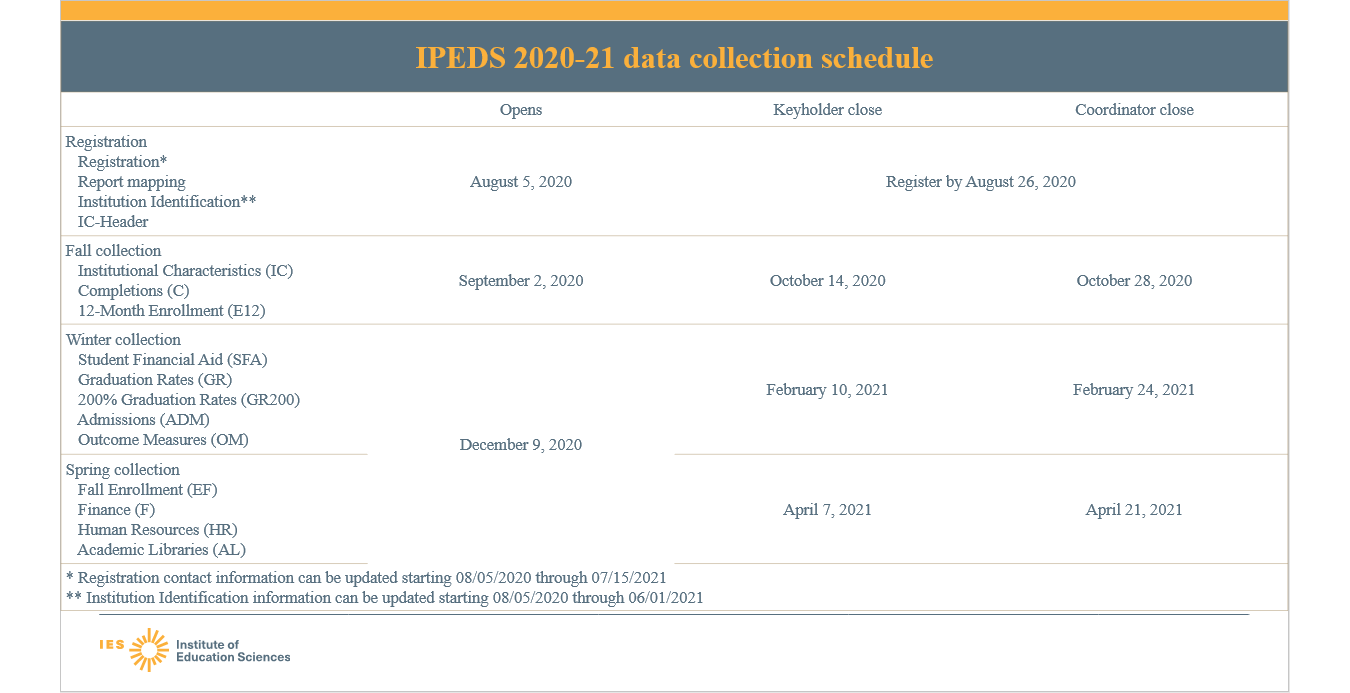
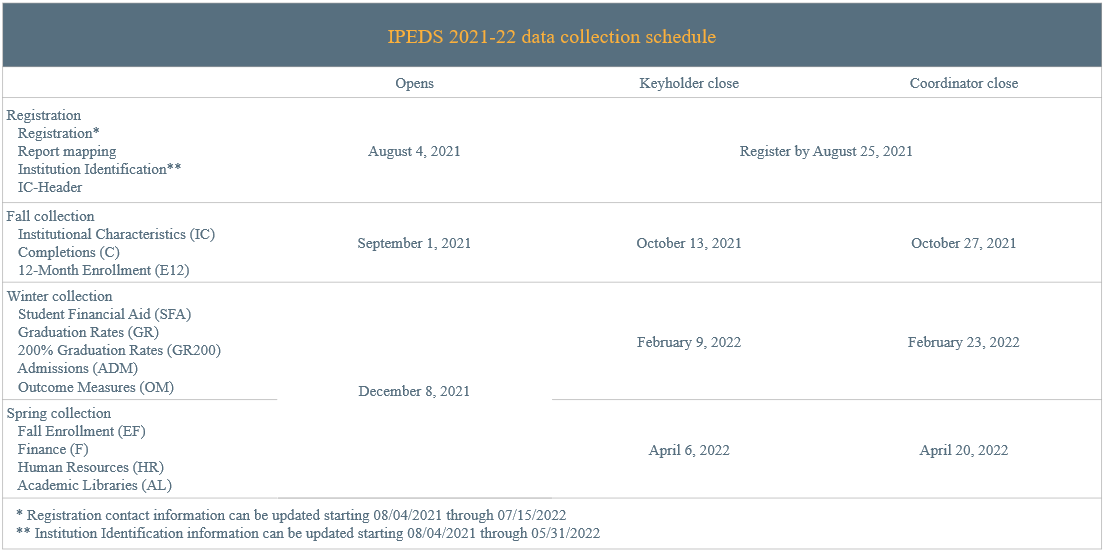
 p.
14 replaced image from 2020-21 collection with image from 2021-22
collection
p.
14 replaced image from 2020-21 collection with image from 2021-22
collection

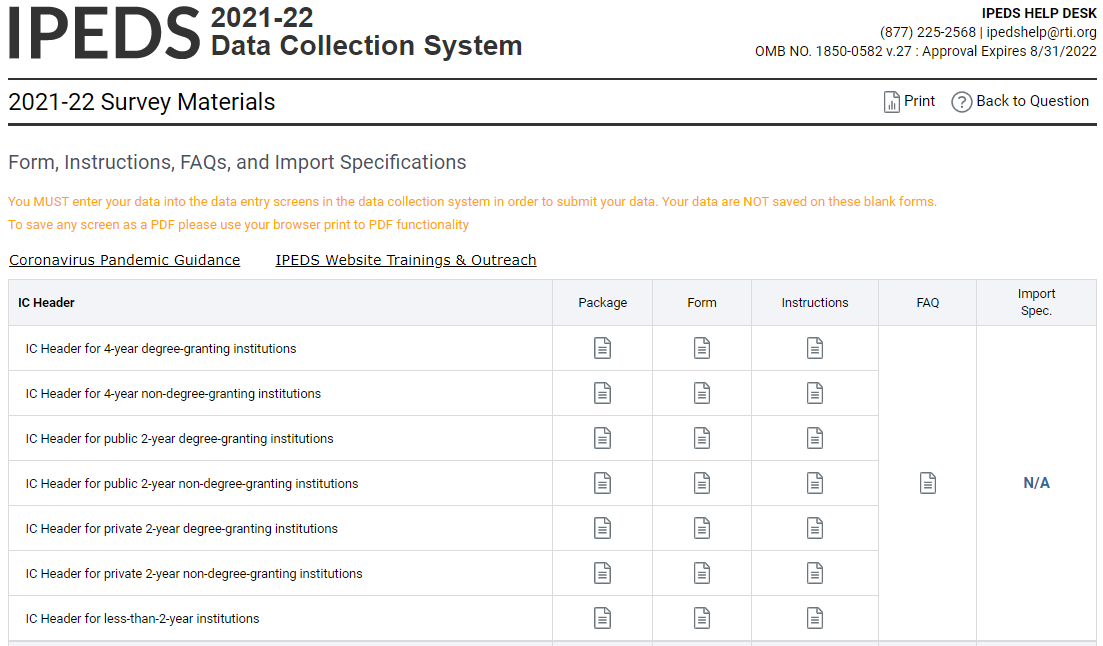
p. 15 replaced old glossary images with new
glossary images

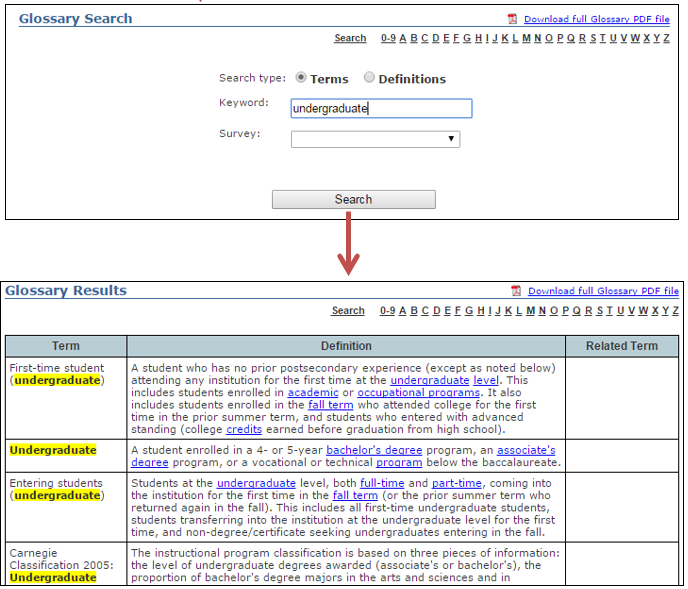
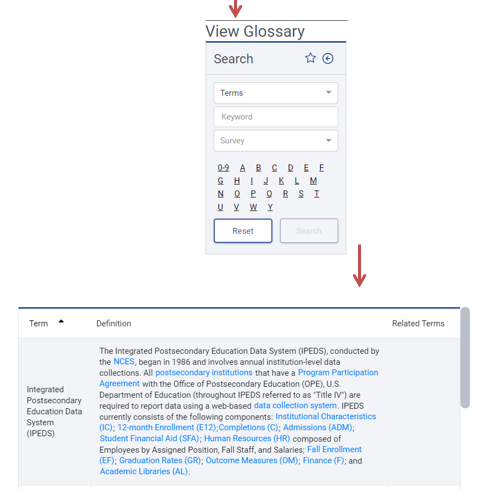
p. 21
replaced image from 2020-21 collection system with image from 2021-22
collection system


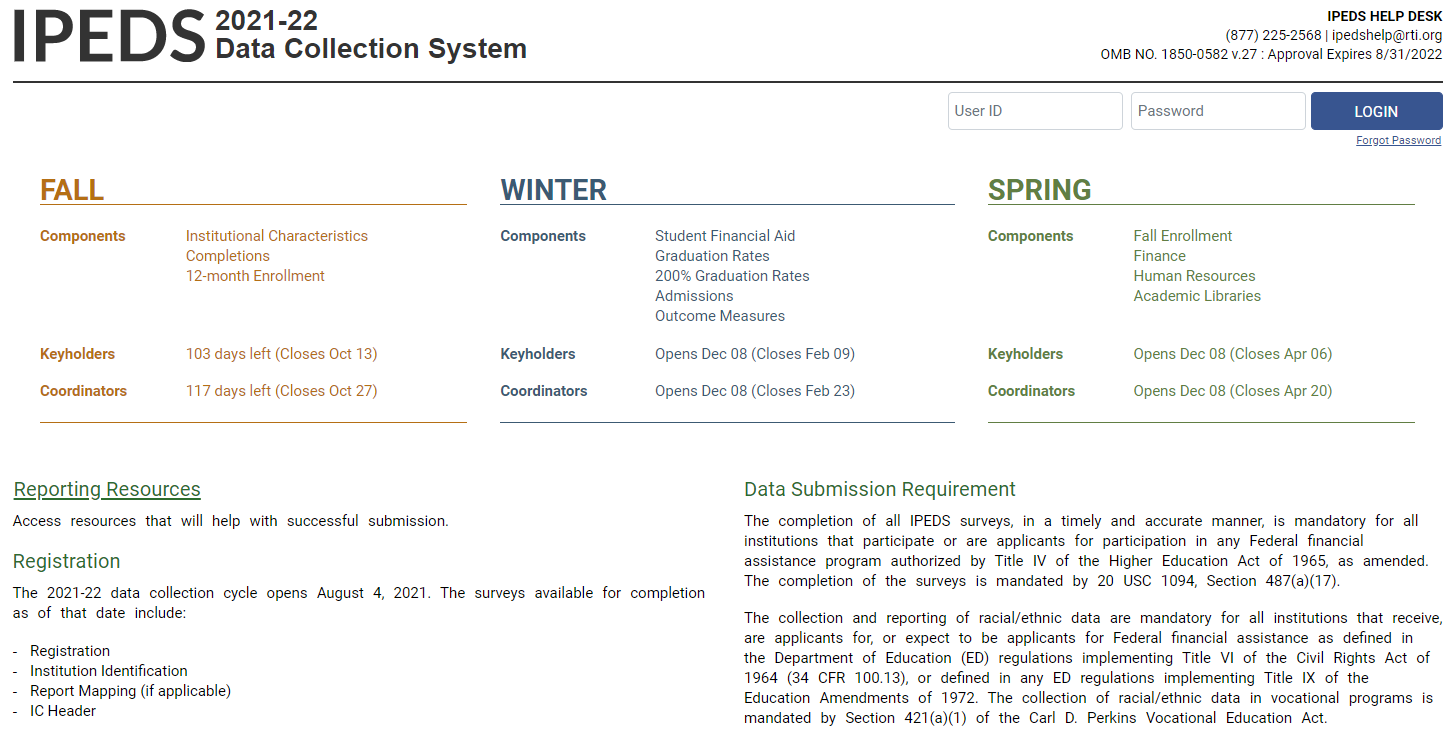
p. 22 removed note about message center, as it
is no longer part of the collection system
The Message Center will tell you if you have new,
unread messages.
p. 24 removed image from 2020-21 collection and
replaced with image from 2021-22 collection
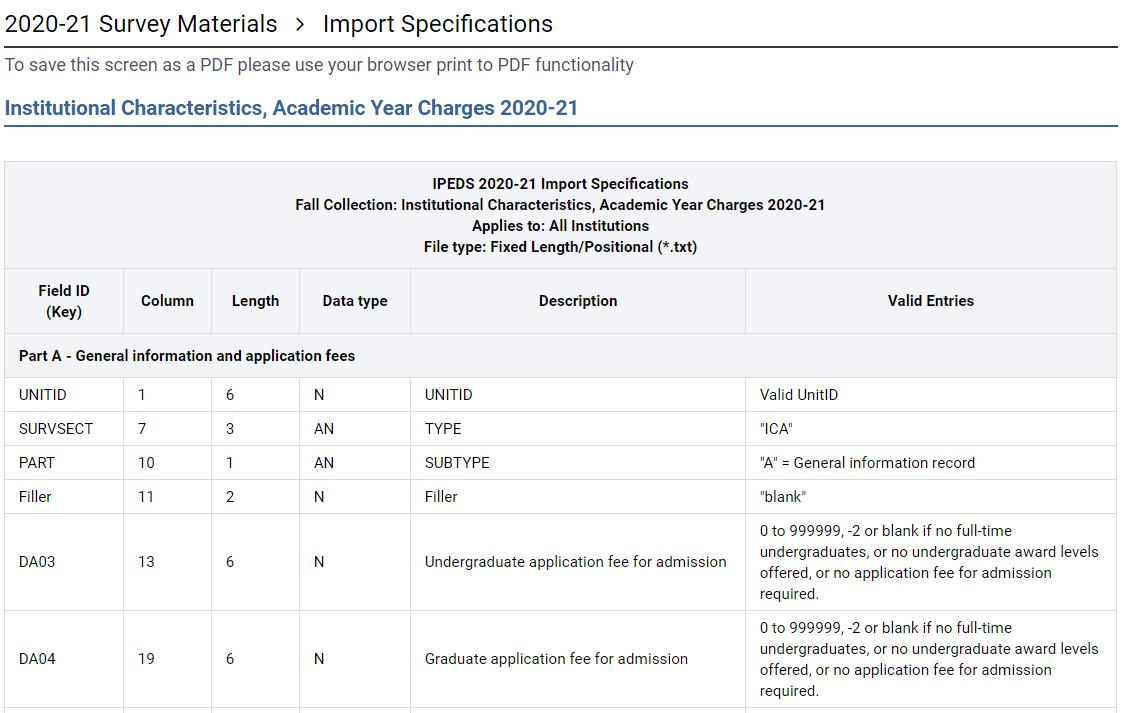

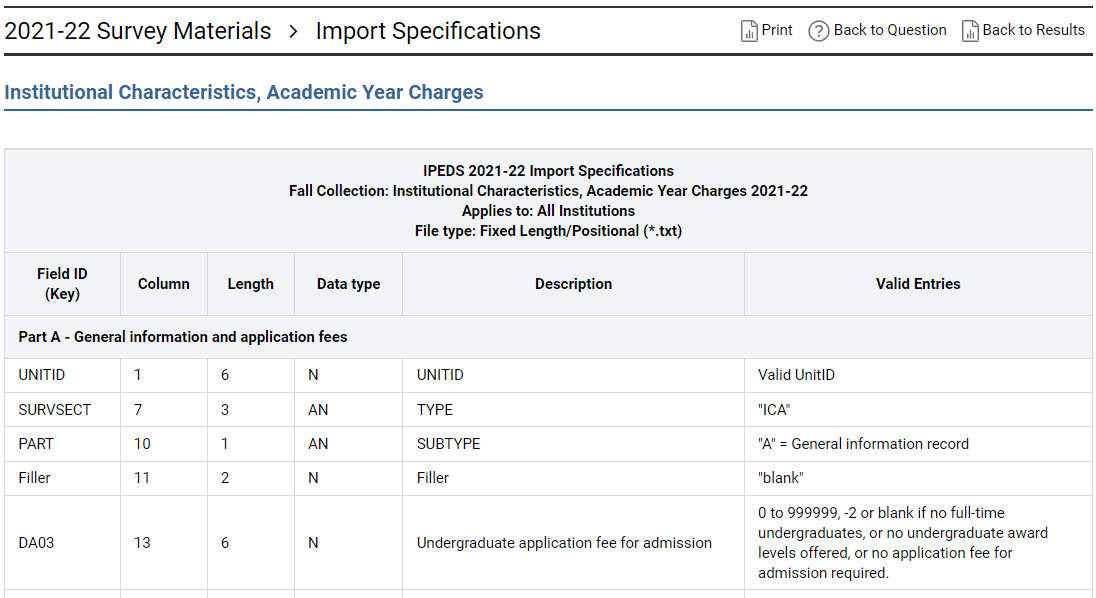
p. 30, 39 removed image from 2020-21 collection
and replaced with image from 2021-22 collection

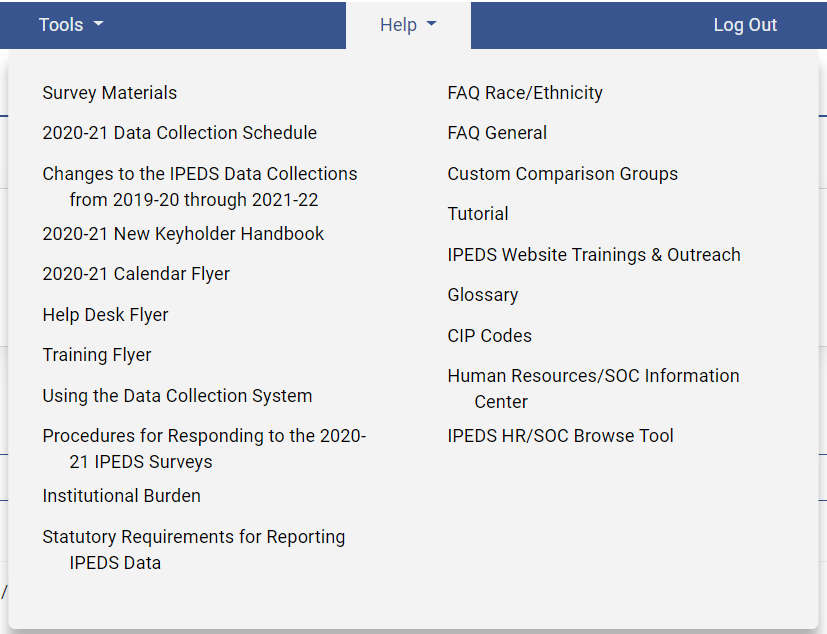
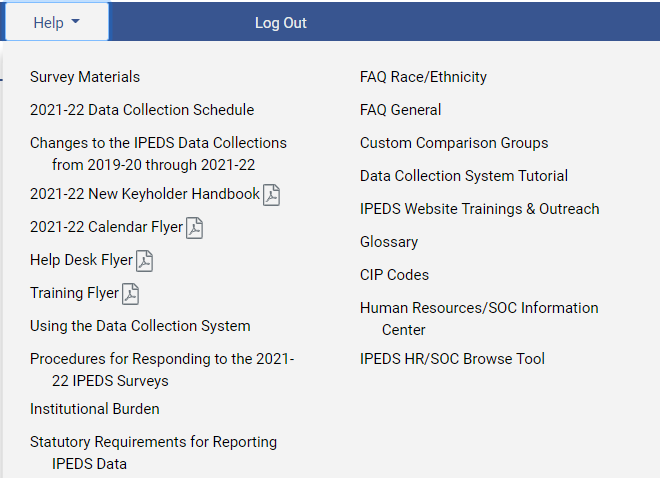
 p.
40 replaced an older image from website with a newer image
p.
40 replaced an older image from website with a newer image
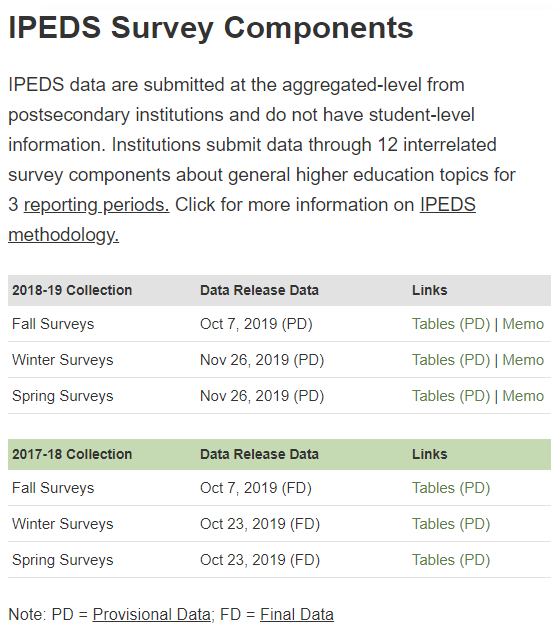
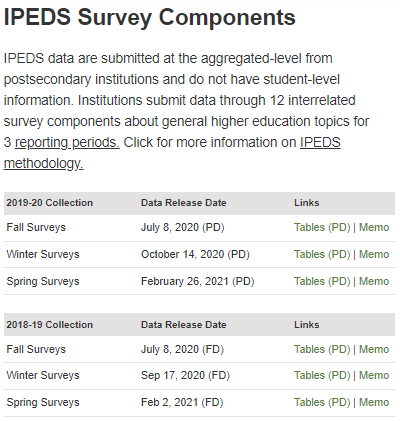
p. 43
replaced an older image from website with a newer image
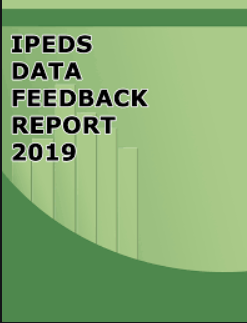
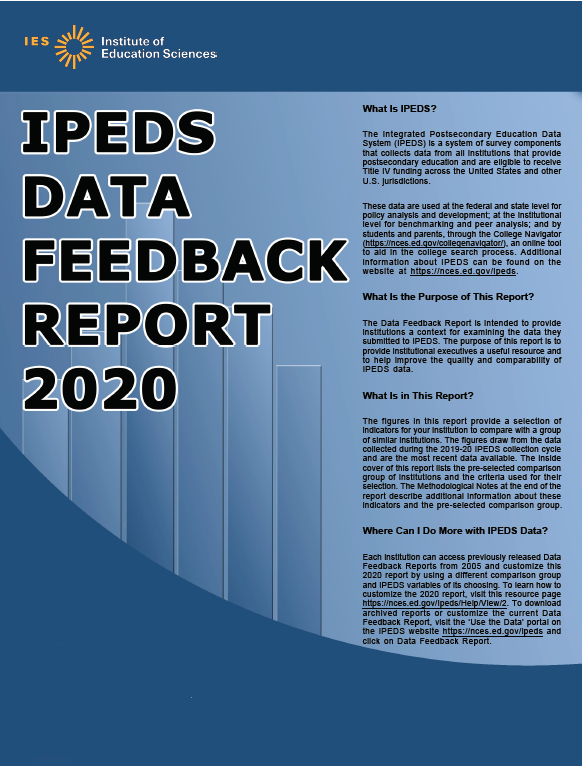

| File Type | application/vnd.openxmlformats-officedocument.wordprocessingml.document |
| File Modified | 0000-00-00 |
| File Created | 2021-07-16 |
 dated image that needed to be removed
dated image that needed to be removed p.
14 replaced image from 2020-21 collection with image from 2021-22
collection
p.
14 replaced image from 2020-21 collection with image from 2021-22
collection













 p.
40 replaced an older image from website with a newer image
p.
40 replaced an older image from website with a newer image












